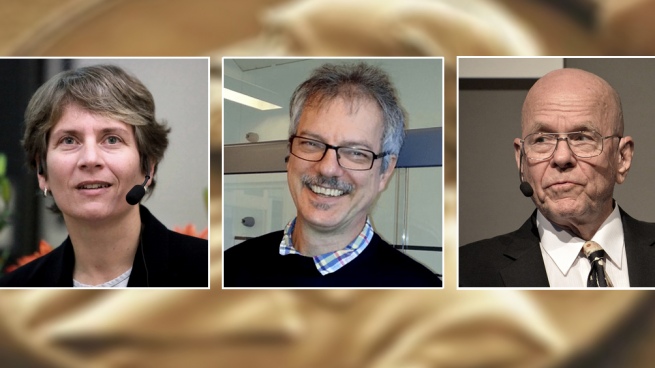American scientists Carolyn Bertozzi Y Barry Sharplessand danish Morten Meldal received the Nobel Prize in Chemistry 2022 awarded by the Royal Swedish Academy of Sciences, for the creation of the “click chemistry” and of the “bioorthogonal chemistry”which among other things served to develop pharmaceuticals, map DNA, and create materials that are more fit for purpose.
“This year’s Chemistry Prize tries not to overcomplicate things, but to work with the easy and simple. Functional molecules can be built even by following a direct route,” said Johan Åqvist, chairman of the Nobel Committee for Chemistry.
Explaining the rationale for the choice, the Nobel Prize organizers explained that “for a long time, chemists have been driven by the desire to build ever more complicated molecules.”
“In pharmaceutical research, this often involved the artificial recreation of natural molecules with medicinal properties. This led to many admirable molecular constructs, but they are generally time-consuming and very expensive to produce,” they noted.
In opposition to this, Barry Sharpless and Morten Meldal laid the groundwork for “a functional form of chemistry, click chemistry, in which molecular building blocks come together quickly and efficiently.”
BREAKING NEWS:
The Royal Swedish Academy of Sciences has decided to award the 2022 #NobelPrize in Chemistry to Carolyn R. Bertozzi, Morten Meldal and K. Barry Sharpless “for the development of click chemistry and bioorthogonal chemistry.” pic.twitter.com/5tu6aOedy4— The Nobel Prize (@NobelPrize) October 5, 2022
The term “click chemistry” It was coined around the year 2000 by Sharpless, who is now receiving his second Nobel Prize in Chemistry, and is not only a simple and reliable form of chemistry, where reactions occur quickly, but unwanted by-products are also avoided.
Shortly thereafter, Meldal and Sharpless, independently of each other, presented what is now the crown jewel of click chemistry: copper-catalyzed azide-alkyne cycloaddition, a chemical reaction that is currently used, among many other things, for the development of pharmaceuticals, to map DNA and create materials that are more fit for purpose.
For her part, Carolyn Bertozzi took click chemistry to a new level. “To map important but elusive biomolecules on the surface of cells (glycans) she developed click reactions that function inside living organisms. Her bioorthogonal reactions take place without altering the normal chemistry of the cell”, they explained from the Nobel Prize.
These reactions are now used globally to explore cells and track biological processes; for example, using bioorthogonal reactions, the researchers improved the targeting of anticancer pharmaceuticals, which are now being tested in clinical trials.
















